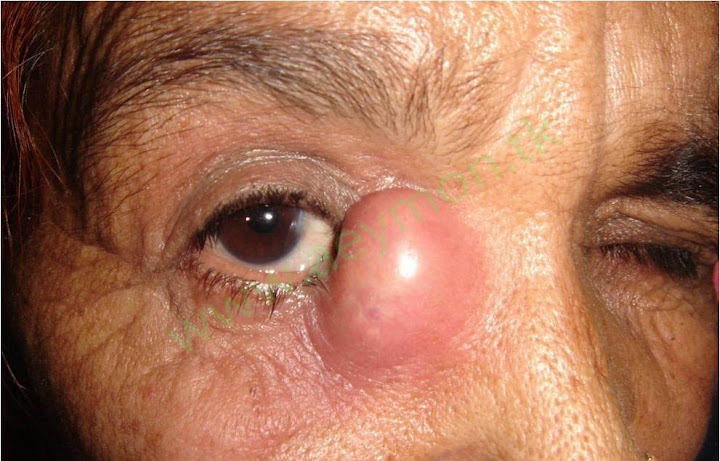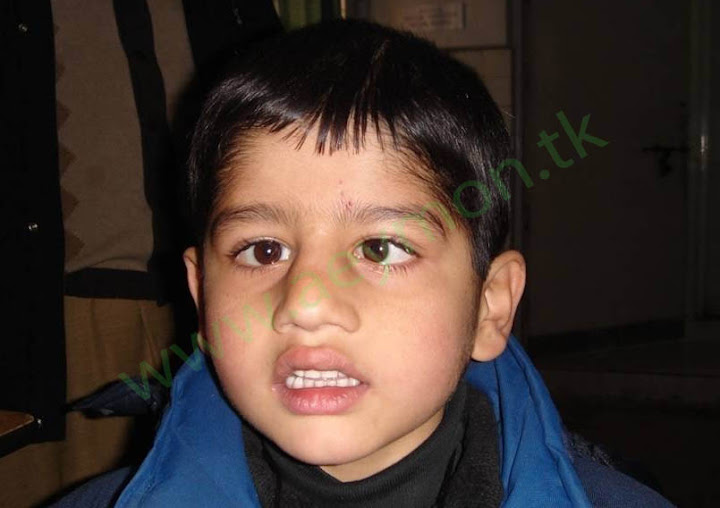● An elderly lady presents with painful,medial canthus swelling since 4 days
1. What is the D/D only enumerate?
- Acute Dacryocystitis
- Canaliculitis
- Infected chronic dacryocystitis
- lacrimal duct obstruction
2. What is the treatment of the condition (briefly)?
- Hot Fomentation.
- Systemic Antibiotics,
- Analgesics and Anti-inflammatory drugs.
- Incision and drainage if there is abscess formation
● A 60 year old man comes to the Eye OPD with chief complaints of redness, irritation, watering, photophobia and gradual reduction of vision since 3 months
1. What is the diagnosis?
- Anterior Uveitis
2. What is the treatment?
- Mydriatic and Cycloplegics e.g Atropine eye drops
- Topical steroids
- Antibiotics
- Cytotoxic drugs for steroid resistant cases

●A child presents with a red eye of 15 days duration;
1.What is the most likely cause?
Phlyctenular conjunctivitis
2.What laboratory investigations would you order?
Investigations for T.B
Conjunctival Cytology

● A middle ages man comes to Eye OPD with a history of sudden onset complete III nerve palsy;
1. What are the causes?
- Cavernous sinus thrombosis
- Trauma
- Iatrogenic
- Inflammation and infection
- MRI
● A child gives 3 year history of itching more severe in summers ;
1. What is the positive finding in the picture?
—Papillae (cobble-stone) type in upper palpebral conjnuctiva.
2. Enumerate the corneal complications of this condition.
—Punctate epithelial erosions.
—Macroerosions.
—Shield ulcers and plaques.
—Ring Scar.
● A 5 year old child has esotropia since 2 years of age;
1. the patient has which type of esotropia?
—Accomodative esotropia.
2. What is the first line of treatment?
—Use of Bifocal Glasses (+3D)
●
1. What is this condition?
1. What is this condition?
—Ocular Melanosis.
2. What are the indications of surgical treatment of this condition?
—Extraocular spread.
—Increasing visual loss.
—Blind eye.
● A patient working with hammer and chisel presents with pain redness and blurring of vision;
1. What is the positive finding in the picture?
—Foreign body (in orbit).
2. Which investigation is contraindicated in this case?
—MRI.
●
1.What is this investigation?
1.What is this investigation?
B-Scan.
2. What is the diagnosis in this case?
Vitreous Shadow e.g. hemorrhage
●
1. Which type of corneal ulcer is present in this patient?
1. Which type of corneal ulcer is present in this patient?
—Herpetic Dendritic Ulcer.
2.What is the treatment?
—Topical Antiviral e.g. Acyclovir
—Debridement
—Topical Antibiotic
—Cycloplegic
●
1.What are the indications of surgery in this condition?
1.What are the indications of surgery in this condition?
— Visual Impairment.
—Cosmetic reasons.
—Astigmatism.
—Diplopia.
2. Name the best operation for this condition
—Simple excision with key-hole keratoplasty.
●
1. Which type of cataract is present in this patient?
1. Which type of cataract is present in this patient?
Hypermature Cataract.
2. Which intra-operative complications are more likely to occur in this patient?
—Rupture of posterior Capsule.
—Vitreous loss.
—Nucleus drop into vitreous cavity.
—Expulsive Hemorrhage.
● This patient had surgery for pterygium 15 days back;
1. What is the main positive finding in the picture?
—Pyogenic Granuloma.
2. What is the treatment?
—Surgical Excision.
●This patient had non healing corneal ulcer for 4 weeks;1. What are the two main causes of non healing corneal ulcers of such a duration?
—Corneal epithelial defects .
—D. Mellitus.
—Persistent infection.
2. What surgery has been done in this case?
—Keratoplasty.
●
1.What is the main positive finding in the picture?
1.What is the main positive finding in the picture?
—Proptosis.
2. Enumerate the main investigations that will help you reach a diagnosis.
2. Enumerate the main investigations that will help you reach a diagnosis.
A)Radiological investigations:
—X-rays.
—CT-scan.
—MRI.
—Ultrasonography.
—
B) lab investigations:
—Routine tests: CBP, TLC, DLC, ESR , Urine examination.
—Special tests: Like T3, T4, TSH level of blood.













No comments:
Post a Comment